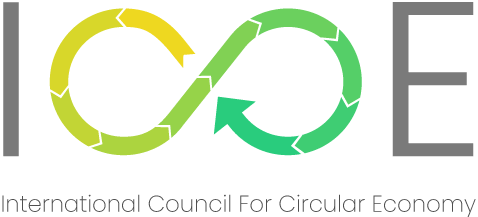ABSTRACT
This paper explores fashion’s challenge in establishing a sustainable waste management system, exploring Circular Economy (CE) and climate strategies. CE aims to circulate garments continuously, maximizing their value and returning them to the biosphere when idle for long periods. It promotes reusable designs, extending product lifespan and benefiting the environment. The shift from linear to fast fashion brings significant environmental consequences, heavily relying on resources for cheap, short-lived clothing, worsening crises. CE’s current focus on waste overlooks earlier production phases’ environmental impacts. A comprehensive assessment of CE initiatives across supply chain stages is crucial to understand their cumulative environmental footprint. While studies explore CE in fashion, emphasizing waste management, their environmental impact in earlier supply chain stages is unexplored. This study examines CE in India’s fashion industry, emphasizing sustainability through empirical research with brand founders, managers, and CEOs. It evaluates climate strategies’ impact on reducing greenhouse gases, resource demands, and water/energy use. The core aim is to understand how CE and climate strategies reduce fashion industry waste. This research examines case studies to understand how fashion brands implement CE principles, especially in fast fashion. It seeks insights into challenges/opportunities in implementing climate strategies and CE across the fashion supply chain, fostering a sustainable circular fashion economy.
INTRODUCTION
A circular economy in fashion industry or circular fashion industry is termed as regenerative system, the garments are circulated so long till the retained maximum value and safely returned to biosphere when they not in use for longer period of time. The products are designed and established with reuse in mind. Best thing anyone can do is lesser buy and more repurpose, extending the product lifecycle. It resulted in greater positive effect on the planet. Nowadays, circular economy concept is considered as highly efficient and closed loop economy is developed as viewpoint in transformation to less wasteful and highly sustainable fashion industry. The circular economy is developed as the reason for the higher challenge handled by fashion industry. This kind of involvements at waste stage are addressing the fashion industry’s environmental impact. A circular economy is defined as it can redesign the idea of materials fabrication and use the resources to make, use, and dispose in regarding recycling. While concentrating on circular economy with greater lifetime and materials reusing, full value of products are gained and waste over-generation is avoided. The circular e-fashion industry is developed by Anna Bismar, Green strategy(Shirvanimoghaddam, Motamed, Ramakrishna, & Naebe, 2020). Before focusing on circular economy, three key steps have been followed by linear model fashion industry such as take- raw materials harvesting, garments production- make and subsequent garments disposal wearing – waste(MacArthur, 2017). A leading business model in Fast fashion industry consumes huge quantities of natural resources to yield inexpensive clothes prepared by lesser paid workers which worn for lesser period of time by consumers and disposed subsequently(Leslie, Brail, & Hunt, 2014). If the clothing production increasing then the number of times the clothing worn by, consumers decreased(MacArthur, 2017). The results shows that the different estimates produces huge amount of waste (Niinimäki et al., 2020) and formed environmental and social sustainability crisis (Bick, Halsey, & Ekenga, 2018). Nowadays the circular economy dominated both academic and policy oriented with respect to sustainable fashion(De los Rios & Charnley, 2017; Elia, Gnoni, & Tornese, 2017). With respect to uplift thinking, circular economy is sustainability context which aims to minimize the waste and maximize the resource efficiency. The concept of circular economy exhibits roots in industrial, ecological and environmental economics in which researchers are assessed the relationship between economic and environmental strategies(Geissdoerfer, Savaget, Bocken, & Hultink, 2017; Rosa, Sassanelli, & Terzi, 2019). The circular economy identifies to redirect the material and energy’s linear flow, assists various production processes into closed loop or circular systems which highlights the waste residuals and resource usage(De los Rios & Charnley, 2017). By connecting consumption and production activities, circular economy resulted to new and highly sustainable business models(Witjes & Lozano, 2016), can decouple the environmental loss and economic growth(Elia et al., 2017).
MOTIVATION
Researchers evaluating the circular economy in fashion industry are mainly focusing on industry actions enabled by circular business models decrease the fast fashion environmental impact(Machado, de Almeida, Bollick, & Bragagnolo, 2019; Sandvik & Stubbs, 2019). The studies also assessed the developed practices like materials recycling and second hand shopping which contributes to the greater circular fashion industry. The influences of these kind of activities on environmental sustainability is greatly challenged. If involvements at waste stage is not affect the impact created at take and make stages, the evaluations is required for assessing the circular economy initiatives which target directly at these kind of stages. Garment recycling shows its environmental implications whereas combined fashion consumption shows reflection impacts(Iran & Schrader, 2017). In addition, the waste stage overlooks environmental impact based on lifecycle assessment study from(Roos, Zamani, Sandin, Peters, & Svanström, 2016), leads to carbon footprint apparel sector in Swedish country. The waste fails to target the more environmental damage of take and make stages.
LITERATURE REVIEW
Swedish fashion industry has been investigated in (Abhinav, Lazarus, Priyanga, & Kshama, 2018), regarding the circular economy implementation principles. Swedish fashion brands’ CEO, sustainability managers, and founders have been interviewed which leads to circular economy strategies based on 3 key points like take, make, and waste. The brands should incorporate the mentioned strategies across the supply chains instead of waste stage. The evaluation results identifies the gaps while focusing on circular economy practices and fashion brand challenges. Moreover, scientific data from food and textiles global economy have selected in (Provin & de Aguiar Dutra, 2021), by focusing on reusable wastage from food industry to new textile manufacturing with more added value. For bio-textiles manufacturing the bacterial cellulose from pro-biotic drinks have been concentrated from the fashion industry. UN sustainable goals with circular economy areas were also covered. In(Dissanayake & Weerasinghe, 2021), circular fashion understanding based on systematic literature review is performed in order to provide a context and strategies to move from linear to closed loop fashion. Various viewpoints regarding enablers and barriers have been discussed. Better insights of researchers, innovators, designers, and businesses have been analysed for circular economy transition in fashion industry. (Saha, Dey, & Papagiannaki, 2021) emphasized that, to deal with environmental impacts there exists lack of managerial expertise and knowledge. Global warming should be restricted within 1.5 oC, the universal consent which can tackle the exceptional climate emergency facing globally. Economic sustainability in India, Vietnam and Bangladesh have been investigated to capture the waste management for recycling in the textiles and clothing industry. The available market view for the recycling textiles have been reviewed with respect to various business strategies for the textile market integrating the consumer choices modification and sustainability. Detailed discussion of specific consumer habits with respect to textile and clothing industry analysed. The barriers have been evaluated in order to attain the positivity for the economy and environment associated with fashion redefinition and textile recycling(Pandit, Nadathur, & Jose, 2019).
PROBLEM DESCRIPTION AND OBJECTIVES
The major contribution of this study is the investigation of circular economy initiatives and its sustainability in Indian fashion industry based on surveys, case studies, and interviews from brand founders, source manager, designer, and CEOs provides how fashion brands are changing the circular economy principles into practice. Specifically in fast fashion industry and sustainable brands. In accordance with climate strategy, moving from linear to closed loop or circular fashion brings new significant benefits in fashion industry with respect to reducing the GHG emissions, resource requirements, and water and energy savings. Since the resources’ shortage like energy and water cannot meet the fashion apparel growing demand in linear fashion. These kind of sustainable transition leads to new business ideas, sustainable consumers, and employment opportunities. Hence, circular economy in fashion industry provides the consumers with sustainable products which are designed for reuse, durability, recycle or remanufacture in repeat(Dissanayake & Weerasinghe, 2021).

Research Objectives
- To investigate the circular economy and its sustainable principles adopted in Indian fashion industry through empirical based study.
- To analyse the climate strategies in accordance with case studies of circular fashion industry with respect to reducing the GHG emissions, resource requirements, and water and energy savings.
QUESTIONS
Does the circular economy and climate strategy exhibit positive impact, which are supporting the transition of sustainable fashion industry which produces lesser waste? By focusing on these question, a major focus is thus on waste avoids the supply chain’s interconnected nature in which actions are considered at one stage moves to next stage. There exists a potential barriers and opportunities in implementing the climate strategy and circular economy initiatives and sustainability, but also the policies and practices behind the supply chain implementation. In various existing studies the companies introduced the new business innovations for carrying out the circular economy principles. To becoming more circular, the fast fashion business model and existing brands adoption in linear supply chain is lesser known. Hence, detailed analysis about this generative statement is also needed. Case studies oriented research can also helpful to address the existing research gaps and issues in fashion industry focusing in various industrial and geographic contexts.
RESEARCH APPROACH
The present study focuses on mixed approach such as Qualitative and Quantitative study to investigate the circular economy in Indian fashion industry. In addition, case study will evaluate circular fashion industry adoption of climate strategies.
QUALITATIVE APPROACH
Qualitative studies require the exploratory and comprehensive work which provides empirically rich complex sensation. In order to understand the circular economy and sustainability in Indian fashion industry, the reason behind business organizations, and the consumers adopting certain principles should be known. This kind of context is best examined through interviews with people who face these issues and solutions every day. The major data source can be semi-structured interviews with Indian fashion brands employees responsible for sustainability initiatives. These brands are identified from different sources, web searches, lists of industry association membership, media articles and fashion week rosters. The fashion apparels included are the various range of industry segments comprised with contemporary, denim, outdoor or sports apparel, kids and women wear, unisex design and accessories. The respondents can be consider based on brand size with either sourcing manager or founder, head designer, CEOs or others. All the participants are strictly anonymous in order to protect the identity of brands. The questions may be about the brand, style, and focus. Further, it examined the sustainable challenges facing, and determine the circular economy practices following. Another set of questions probed with sustainability, challenges in adopting circular economy and corporate social responsibility. Dominant themes can adopted for the transcripts to minimize the information obtain by sorting the responses for further analysis. This kind of exploratory process can connect to the sustainability circular economy in fashion industry.
QUANTITATIVE STUDY
A quantitative study based on survey questionnaire is considered and obtain the responses through email, social media and other digital platform. All the responses are considered excluding the responses which are incomplete. Here both quantitative and qualitative methodologies are applied for the incorporation of differentiate methodologies. Using the google forms the questionnaire is created with multiple choice based on Likert scale, based on participants fashion matters, preferences in clothes and discarding.
CASE STUDY
Case study can also be suggested to evaluate the climate strategies in accordance with circular fashion industry with respect to reducing the GHG emissions, resource requirements, and water and energy savings. The reports are gather from market, environmental and customer data. Further, the analysis is prepare based on the reports.
EXPECTED OUTCOME
From the examination of circular economy and its sustainable principles adopted in Indian fashion industry, several adoption policies, principles, practices, challenges are identified. Further, in order to reduce the resources and GHG emissions, the climate strategies challenges and practices in circular fashion industry are identified.

REFERENCES
Abhinav, M., Lazarus, T. P., Priyanga, V., & Kshama, A. (2018). Impact of rainfall on the coconut productivity in Kozhikode and Malappuram Districts of Kerala. Current Agriculture Research Journal, 6(2), 183-187.
Bick, R., Halsey, E., & Ekenga, C. C. (2018). The global environmental injustice of fast fashion. Environmental Health, 17(1), 1-4.
Bocken, N., Miller, K., Weissbrod, I., Holgado, M., & Evans, S. (2018). Slowing resource loops in the Circular Economy: an experimentation approach in fashion retail. Paper presented at the International Conference on Sustainable Design and Manufacturing.
De los Rios, I. C., & Charnley, F. J. (2017). Skills and capabilities for a sustainable and circular economy: The changing role of design. Journal of cleaner production, 160, 109-122.
Dissanayake, D., & Weerasinghe, D. (2021). Towards circular economy in fashion: review of strategies, barriers and enablers. Circular Economy and Sustainability, 1-21.
Elia, V., Gnoni, M. G., & Tornese, F. (2017). Measuring circular economy strategies through index methods: A critical analysis. Journal of cleaner production, 142, 2741-2751.
Gazzola, P., Pavione, E., Pezzetti, R., & Grechi, D. (2020). Trends in the fashion industry. The perception of sustainability and circular economy: A gender/generation quantitative approach. Sustainability, 12(7), 2809.
Geissdoerfer, M., Savaget, P., Bocken, N. M., & Hultink, E. J. (2017). The Circular Economy–A new sustainability paradigm? Journal of cleaner production, 143, 757-768.
Iran, S., & Schrader, U. (2017). Collaborative fashion consumption and its environmental effects. Journal of Fashion Marketing and Management: An International Journal.
Leslie, D., Brail, S., & Hunt, M. (2014). Crafting an Antidote to Fast Fashion: The Case of T oronto’s Independent Fashion Design Sector. Growth and Change, 45(2), 222-239.
MacArthur, F. E. (2017). A new textiles economy: redesigning fashion’s future. Ellen MacArthur Foundation, 1-150.
Machado, M. A. D., de Almeida, S. O., Bollick, L. C., & Bragagnolo, G. (2019). Second-hand fashion market: consumer role in circular economy. Journal of Fashion Marketing and Management: An International Journal.
Mishra, S., Jain, S., & Malhotra, G. (2020). The anatomy of circular economy transition in the fashion industry. Social Responsibility Journal.
Niinimäki, K., Peters, G., Dahlbo, H., Perry, P., Rissanen, T., & Gwilt, A. (2020). The environmental price of fast fashion. Nature Reviews Earth & Environment, 1(4), 189-200.
Pandit, P., Nadathur, G. T., & Jose, S. (2019). Upcycled and low-cost sustainable business for value-added textiles and fashion Circular Economy in Textiles and Apparel (pp. 95-122): Elsevier.
Provin, A. P., & de Aguiar Dutra, A. R. (2021). Circular economy for fashion industry: Use of waste from the food industry for the production of biotextiles. Technological Forecasting and Social Change, 169, 120858.
Roos, S., Zamani, B., Sandin, G., Peters, G. M., & Svanström, M. (2016). A life cycle assessment (LCA)-based approach to guiding an industry sector towards sustainability: the case of the Swedish apparel sector. Journal of cleaner production, 133, 691-700.
Rosa, P., Sassanelli, C., & Terzi, S. (2019). Towards Circular Business Models: A systematic literature review on classification frameworks and archetypes. Journal of cleaner production, 236, 117696.
Saha, K., Dey, P. K., & Papagiannaki, E. (2021). Implementing circular economy in the textile and clothing industry. Business Strategy and the Environment, 30(4), 1497-1530.
Sandvik, I. M., & Stubbs, W. (2019). Circular fashion supply chain through textile-to-textile recycling. Journal of Fashion Marketing and Management: An International Journal. Shirvanimoghaddam, K., Motamed, B., Ramakrishna, S., & Naebe, M. (2020). Death by waste: Fashion and textile circular economy case. Science of The Total Environment, 718, 137317.
Witjes, S., & Lozano, R. (2016). Towards a more Circular Economy: Proposing a framework linking sustainable public procurement and sustainable business models. Resources, Conservation and Recycling, 112, 37-44.

Industry Practitioner
Aditya Birla Fashion and Retail Limited
